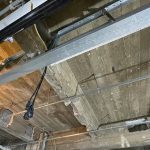At this stage in the project cycle, the goal is to bring the project from 90% to a full 100% completion and close out every open item in the project, a process that takes several months.
The project close out process is one of the most important stages in an Architecture & Construction project. At this stage in the project cycle, the goal is to bring the project from 90% to a full 100% completion and close out every open item in the project. This process takes several months, and also includes the move-in and occupancy of the project.

Here is a summary of the key components for close out management during the completion and close-out phase. I’ll start with overall process, before diving into specific Day 1 and Day 2 categories and scope.
General Items Through the Close-Out Process
Together the team must ensure all work specified for the original project is completed. The goal for the project team is to verify that no outstanding tasks or incomplete Day 1 areas exist.
Meetings and Workflow
- It’s critical to continue weekly meetings with only the relevant project team, which by this stage is typically the Client, Project Manager, Contractor, Architect, Furniture Vendor, and several specialty vendors.
- Because many project participants typically move on to focus on other projects at the same time as a close out, following up routinely on all open items is critical to getting things done.
- Together, the team should maintain a combined open items list updated 1-2 times a week consistently. Separate remaining work into Day 1 and Day 2 list
- Keep project weekly meetings until both Day 1 and Day 2 items are under 10 items remaining total.
Day 1 Move In Project Close Out:
Day 1 items are scope planned for Move-In Occupancy, and were be executed as part of the core project. The goal for the project team is to verify no incomplete Day 1 tasks and scope exist.
Punch List for Quality and Workmanship:
- Compile a punch list by vendor, of any remaining items that need to be addressed. These may include minor repairs, touch-ups, or adjustments.
- The project teams should inspect the quality of workmanship to ensure that it meets the project specifications, industry standards, and any applicable codes or regulations.
- All vendors and even the client need to check for defects, flaws, or substandard work.
- Missing items should be added to the Day 1 list.
Move and Cleaning:
- The move also needs to be executed in several phases:
- starting much earlier with the IT relocates and reinstallations
- finally concluding with a contents move, packing and unpacking.
- The move may also include monitors, monitor arms, computer equipment, furniture and art.
- Cleaning should be addressed at least twice, and typically includes one Construction Clean prior to content relocates, and one White Glove Fine Cleaning.
- Office fronts, white boards, and glass cleanings are usually also required. Ceilings, walls and windows should be free of fingerprints.
Utilities Commissioning, Certificates and Inspections:
- Test and verify the proper functioning of all utilities, mechanical, electrical, plumbing, and HVAC systems.
- Ensure that they meet design specifications and are properly commissioned.
- Reported handed to the DOB and inspection agencies as required.
- If annual or random DOB inspections are in question for the property, be sure to have documents on file in a safe and easily accessible place.
- Confirm that all required inspections, testing, and certifications have been completed and documented. This includes structural inspections, fire safety inspections, and any other relevant inspections.
Safety and Compliance:
- Confirm that inspection measures are in place and that the construction complies with DOB and city regulations.
- Ensure that safety systems, signage, and equipment are functioning correctly. Included in maintenance programs.
- Key documents are easily accessible and in excellent condition or inspections. Inspections types should be known, and can happen randomly.
Access and Security:
- Access control should be enabled at the project once expensive contents, especially IT equipment, have been set up on site. This means that freight elevators and main elevator banks access control should be enabled.
- Ensure that keys, access codes, and security systems are provided to the owner as needed.
- Share all plans of cable pathways, security camera locations, and low voltage cabling terminations and labels for all wiring.
Project Closeout:
- Review and ensure that all project closeout procedures are followed, including
- Financial closeout,
- Final payments, and
- Release of retainage.
Day 2 and Maintenance:
Day 2 items are new items added after initial Move-In and Occupancy, usually discovered once the client actually lives in the space. These can be short or long lead items, but should be added to the master list of open items. Maintenance also needs to be set up as required in this phase.
Maintenance:
- Maintenance agreements need to be coordinated with vendors for installations that need routine servicing. At minimum they should be coordinated with the installing vendor for the first year.
- Maintenance is usually required for HVAC, Landscape, Lighting Control, AV and Security systems, among others.
Defects and Warranty Issues:
- Identify any defects or issues that may arise during the warranty period.
- Discuss these with the contractor and ensure they are documented for resolution.
Training:
- If applicable, arrange for training sessions for the client’s personnel to operate and maintain systems or equipment within the completed construction.
- Typically done for:
- HVAC systems,
- AV and Security technology systems,
- Lighting Control and Shades systems,
- Landscape and
- any special technology.
Documentation and Records:
- Review and gather all necessary documentation, including
- As-built drawings,
- Permits,
- Warranties, and
- Maintenance manuals.
- Ensure that these documents are organized and ready for turnover to the owner. Handed off in .Zip file online FTP, and also by a physical USB drive.
Documentations and Records can also be established on online platforms – we build these at Arcobee.
When a project manager conducts a turnover conditions walkthrough for a construction project, they are typically inspecting the completed work to ensure that it meets the required quality standards and is ready to be handed over to the client or owner.
Regular communication is crucial to ensure a smooth turnover process and the successful completion of the construction project.






 Table Of Contents
Table Of Contents

Hi this is for testing.